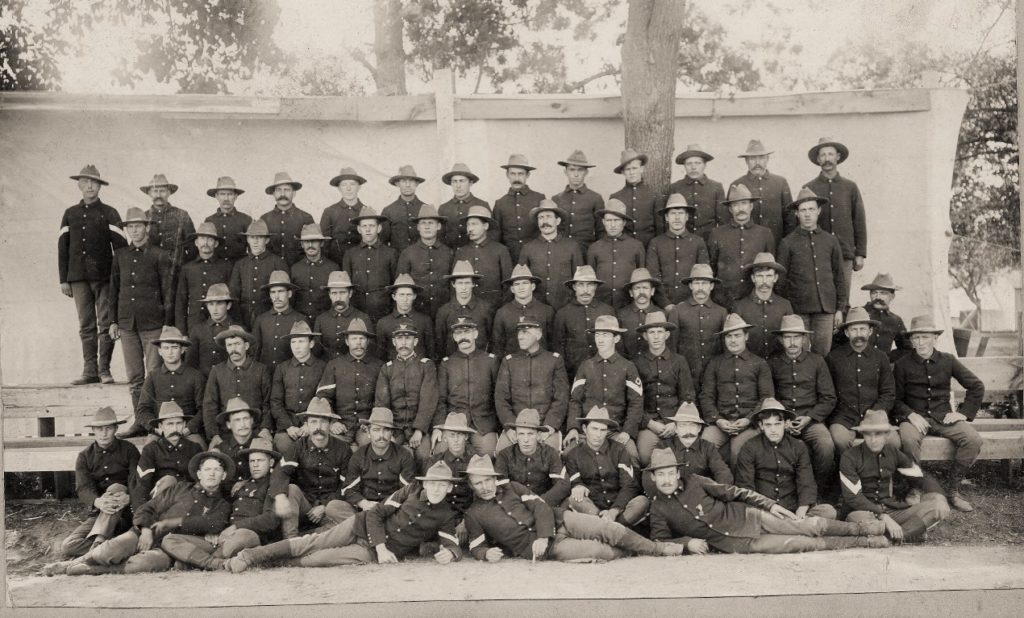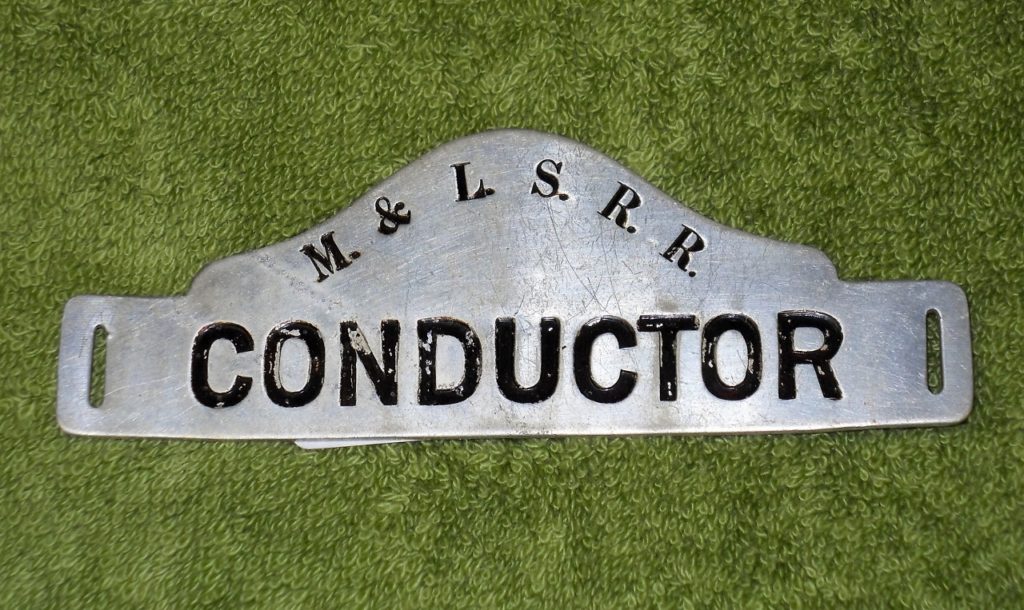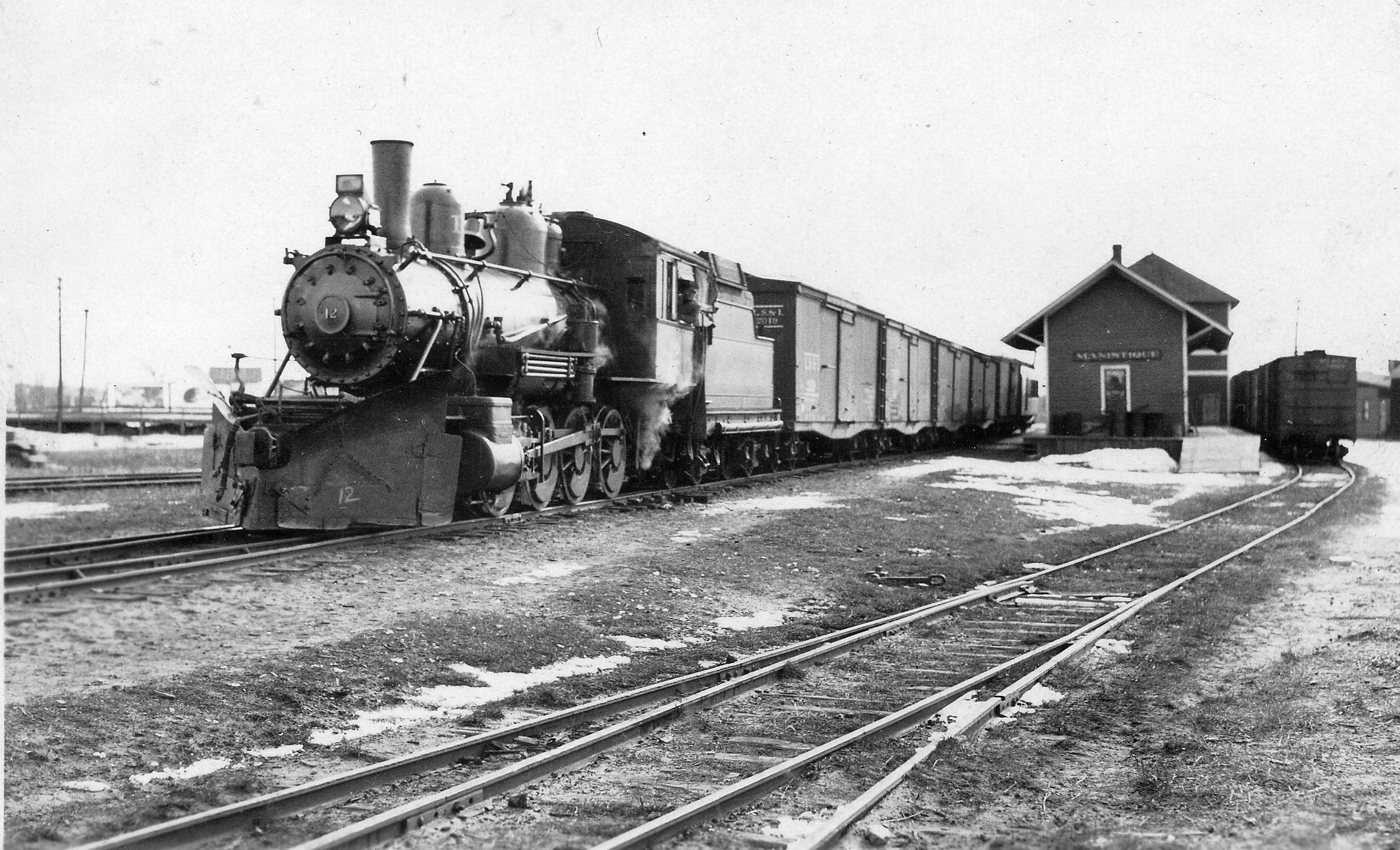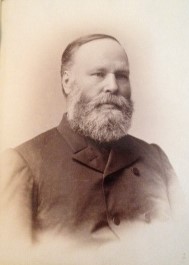
September 27, 1898 image of Spanish American War volunteers from Schoolcraft County. The photo was taken at Camp Eaton, Island Lake, Michigan, by Schoolcraft County Clerk Ed Ashford. Niles and Helmka Family Collection
War with Spain
On February 15, 1898 the American battleship Maine exploded in Havana harbor. The event would soon become the catalyst for hostilities between the United States and Spain. With growing calls for war from politicians led by Teddy Roosevelt, President William McKinley made his first call for 125,000 troops on April 23, 1898. Michigan responded to the President’s call for troops, by attempting to nationalize the existing Michigan National Guard. The troops were not allowed to be mustered in as units, but instead were required to volunteer individually. Nearly every member of Michigan’s National Guard volunteered for the war.



